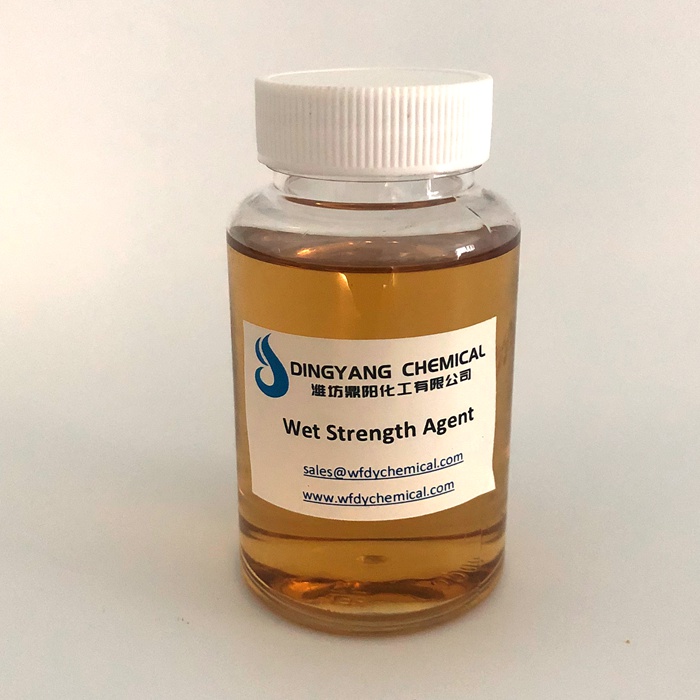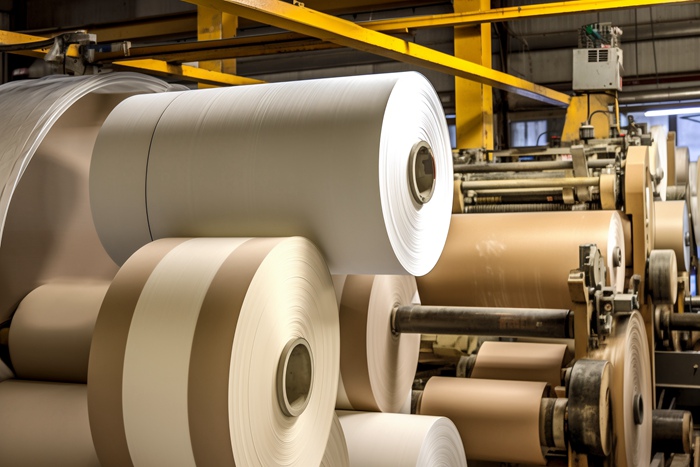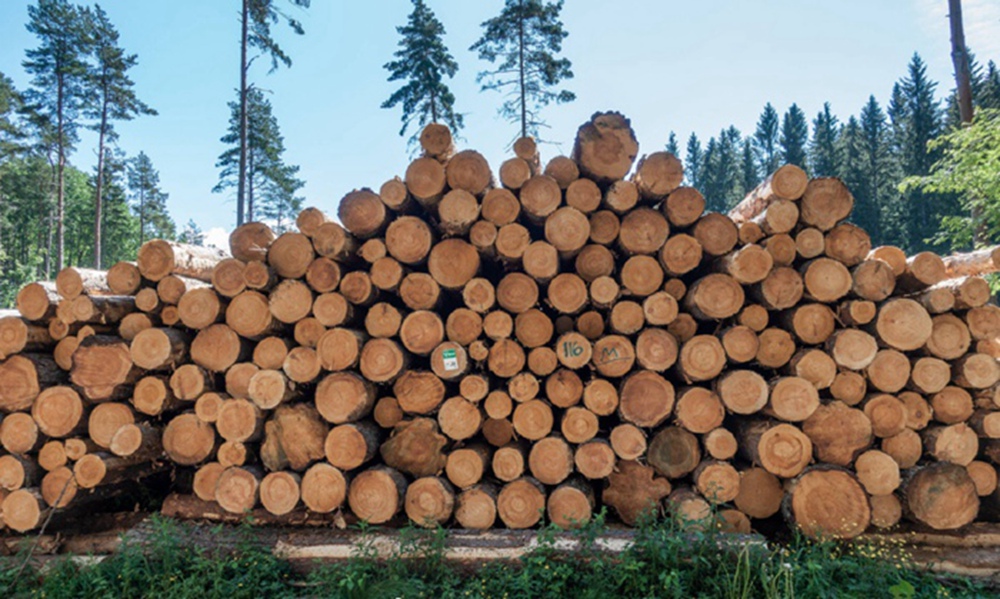Overview and types of wet strength agents
I. Overview
Paper and paperboard lose almost all their mechanical strength after being soaked in water, and generally can only maintain 4-10% of the dry paper strength. Some special papers such as photographic base paper, printing base paper, military map paper, banknote paper, etc. not only have certain dry strength requirements, but also require that they can still maintain certain mechanical strength and characteristics after being soaked in water. For this reason, wet strength agents need to be added to improve the wet strength of paper. Wet strength refers to the mechanical strength and characteristics that paper can still maintain after being soaked in water. After adding wet strength agents, the wet strength of paper can reach 20-40% of the original dry strength.
Enhancing mechanism of wet strength agent
II. Enhancing mechanism
To improve the strength of paper when it is wet, the most important thing is to consider the fiber bonding strength. It is generally believed that there are two mechanisms: (1) Cross-linking with paper fibers, the wet strength agent can form a new water-resistant bond between the fiber and the paper. (2) The wet strength agent cross-links itself to form a membrane around the fiber, reducing the water absorption and swelling of the fiber and protecting the existing hydrogen bonds between the fibers. The wet strength agent does not necessarily have to react chemically with the fiber.
3. Commonly used types of wet strength agents
The oldest method of producing wet strength paper is to heat the paper at high temperature or to parchmentize it in a dilute sulfuric acid solution. Later in the 1930s, people found that some water-soluble synthetic resins added to paper pulp and cured on the paper machine could give the paper wet strength. Since then, the development of wet strength agents has been rapid, and the U.S. paper industry consumes about $100 million in wet strength agents each year.
Currently, the wet strength agents used in pulp are divided into four main categories according to their mechanism of action:
(1) Self-cross-linking polymers, mainly formaldehyde resins, including urea-formaldehyde resins, melamine formaldehyde resins, and phenolic resins
(2) Fiber electrostatic bonding, mainly polyethyleneimine resins, polyamides, polyamines, and polyaminoamides.
(3) Forming covalent bonds with fibers, mainly epichlorohydrin, dialdehyde starch, etc.
(4) External cross-linked polymers, mainly polyacrylamide + ethylene glycol, casein + formaldehyde, etc.
1. Urea-formaldehyde resin (UF)
Urea-formaldehyde resin (UF) is a commonly used wet strength agent. It is a colorless or straw yellow, transparent, uniform syrupy liquid that can be mixed with water in any proportion without precipitation. UF is formed by the reaction of urea and formaldehyde through the condensation of the intermediate product dimethylurea.
Because urea-formaldehyde resin has ionic properties, when added to pulp, the resin will be adsorbed by the fiber and retained on the fiber. It is generally believed that the resin can protect and enhance the hydrogen bonds existing on the fiber, thereby reducing the swelling and hydration of the fiber. It mainly acts on water-sensitive hemicellulose molecules.
Before adding urea-formaldehyde resin, it should be filtered and diluted to a solution of about 1%, and the addition amount is 0.5%~3.0% (for absolutely dry raw materials). The pH value of the front box must be between 4.0 and 4.5, and the pH value of papermaking should also be within this range. Usually added at the position of the slurry pump. When using rosin for sizing, it is very important that alum and rosin must complete the reaction first, otherwise the cationic urea-formaldehyde resin will react with the rosin to produce a foamy complex precipitate. Urea-formaldehyde resin wet-strength paper generally cannot reach its complete curing on the paper machine, so it must undergo an accelerated curing process. Urea-formaldehyde resin will polymerize rapidly when the pH value is lower than 6.0 regardless of its dilution or concentration. When using anionic urea-formaldehyde resin, aluminum sulfate should be added for catalysis.
Urea-formaldehyde resin with a large molecular weight has a better reinforcing effect than urea-formaldehyde resin with a small molecular weight. The greater the degree of hydroxymethylation of urea-formaldehyde resin, the more obvious the improvement of wet strength.
Urea-formaldehyde resin is mainly used for paper bag paper, corrugated paper and linerboard, paper made of ground wood pulp, crepe napkin paper, label paper and handbag paper, etc.
2. Melamine formaldehyde resin (MF)
MF was first used in the 1940s and is an ionic resin. MF used in the papermaking industry is a water-soluble resin formed by condensation of melamine powder and formaldehyde under slightly alkaline conditions. It is a widely used and effective reinforcing agent.
The strengthening mechanism of MF is: after MF resin is treated with hydrochloric acid, the hydrogen ions of hydrochloric acid combine with the resin, making the resin particles positively charged, which are quickly adsorbed by the negatively charged fibers, forming a thin film on the fiber surface to produce dense bonds, increasing the bonding force between fibers, reducing the expansion and deformation of fibers, and giving the paper wet strength. After the resin matures, it is insoluble in water and makes the fibers more firmly bonded to each other.
MF can only be used as a wet strength agent in pulp, with an addition amount of 1%~5% (for absolutely dry fibers). Most papers can achieve the ideal effect by adding 1%~3%. When adding, it should be as close to the front box as possible to mix it thoroughly and evenly. The pH value is 5~6, and it cures quickly. If the curing is incomplete, it should be cured before the paper is stored.
MF can be used together with other sizing materials (such as ammonium stearate sizing materials, rosin sizing materials, oxidized starch, etc.) to obtain better sizing effects and improve the wet strength of paper.
3. Polyethyleneimine (PEI)
PEI is the most widely used and recognized cationic wet strength agent. Its molecular chain contains multiple cationic groups, which can produce strong electrostatic adsorption with the hydroxyl groups on cellulose to form a secondary cross-linking network.
PEI is a water-soluble macromolecule formed by the polymerization of ethyleneimine in the presence of an acidic catalyst (such as carbon dioxide, oxalic acid). It is cationic in aqueous solution and easily adsorbed by anionic cellulose, so it can be used alone without the addition of aluminum sulfate. The best effect is achieved when the pH value is 6-9 when added. The usual dosage is 1-2%, and it is added directly to the pulping tank or the batching tank.
Unlike UF and MF, PEI enables the paper sheet to reach the best wet strength in the drying stage, that is, the paper has the maximum wet strength as soon as it comes off the paper machine, so it does not need to be stored. In addition to the significant strengthening effect, PEI can make microfibers condense, improve water filtration performance, increase the speed of paper machines by 5-20%, and increase the utilization rate of microfibers by 40-80%. However, its monomer ethyleneimine is very active and highly toxic. The amount used in dry pulp cannot exceed 0.5%.
4. Polyamide epoxy resin (PAE)
PAE is a widely used wet strength agent. Commercially available PAE is in the form of slurry and can be mixed with water in any proportion. Different types of pulp have different effects when using PAE enhancers. Generally, the reinforcing effect of PAE on wood pulp is significantly higher than that on straw pulp and cotton pulp. With the increase of beating degree, the specific surface area of the fiber increases, and the adsorption capacity of fiber PAE increases. Therefore, within a certain beating degree range (20~60oSR), the dry and wet strength of the finished paper increases with the increase of beating degree.
PAE is generally added to the high-level box. For better adsorption, it can also be added to the front of the system at the slurry pump. The pH value is between 5~9 (the best effect is 6~8). The general addition amount is 0.25~0.75%. PAE is a thermosetting resin. Paper sheets with PAE resin added must be heated and dried to obtain a good wet strengthening effect. Therefore, in actual use, the paper sheets just off the machine must be forced to mature in a 105℃ oven for 10 to 30 minutes.
PAE can be used in combination with other anionic reinforcing agents such as APAM and CMC to improve the strengthening effect. The addition point of PAE on the paper machine should be far away from the addition point of anions (such as rosin). Otherwise, the reaction of rosin and PAE will form foam and precipitate. For paper with a quantitative of less than 18g/cm2, the use of PAE has a good wet strengthening effect.
5. Polyacrylamide (PAM)
Polyacrylamide is an external cross-linking wet strength agent. The main wet strength agent used is cationic polyacrylamide (CPAM). Polyacrylamide and glyoxal can undergo cross-linking reactions in alkaline media, but are not easy to undergo cross-linking reactions in neutral and acidic media. As the number of hydrogen bonds between the amide group in PAM and the cellulose or hemicellulose molecules increases, the strength of the paper also increases. The more hydrogen bonds, the better the reinforcement effect.
When used, polyacrylamide and ethylene glycol aqueous solution can be added to the pulp or coated on the surface of the paper sheet. The pH value when added is 4.5~7.5. After adding sodium acetate, dimethylamine, etc. and drying the paper, the dry strength and wet strength of the paper can be significantly improved. However, CPAM is more suitable for facial tissue, handkerchief paper and thin paper.
6. Dialdehyde starch
Starch oxidized by periodic acid is called dialdehyde starch. Dialdehyde starch is heated to 90~95℃ to gelatinize and disperse in water. Generally, the aldehyde group of dialdehyde starch is converted into a sulfurous acid adduct by heating in the presence of boric acid and sodium bisulfite, and then a colloidal dispersion is made.
Before use, dialdehyde starch must be fully swollen and dispersed and emulsified, with a pH value between 4.5~5.5. The aldehyde group of dialdehyde starch can cross-link with the fiber hydroxyl group or itself with the remaining dialdehyde starch molecules. While increasing the wet strength, it also increases the dry strength. The optimal addition amount of cationic dialdehyde starch is 2~5%. Dialdehyde starch can enhance the temporary wet strength and permanent dry strength of paper, so it is suitable for facial tissue, thin paper, and towel paper. The waste paper is easy to break and biodegrade when recycled.
In addition to the above-mentioned wet strength agents, some uncommon wet strength agents can also be selected according to the different paper types produced. For example, chloroprene rubber, polyacrylamide grafted cationic starch wet strength agent, phenolic resin, etc.
4. Factors affecting wet strength agent
There are many factors that affect the enhancement effect of wet strength agent, including resin type, pulp type, addition conditions and position, and interfering substances in the pulp. It is not enough for wet strength resin to have high retention, and the retained resin must also be cured.
By adding dry strength agent and wet strength agent at appropriate positions in the wet part, the dry and wet strength of the paper sheet can be improved to meet the processing and use requirements of different performance paper types. It can also accelerate the water filtration of paper stock, make it easy to dry, increase the retention rate of fine fibers and fillers, and promote sizing. With the high speed of paper machines, high paper weight, closed water use and product diversification, reinforcing agents are becoming more and more important. In the future, the research and development of reinforcing agents should be combined with economic and effect evaluation factors.



